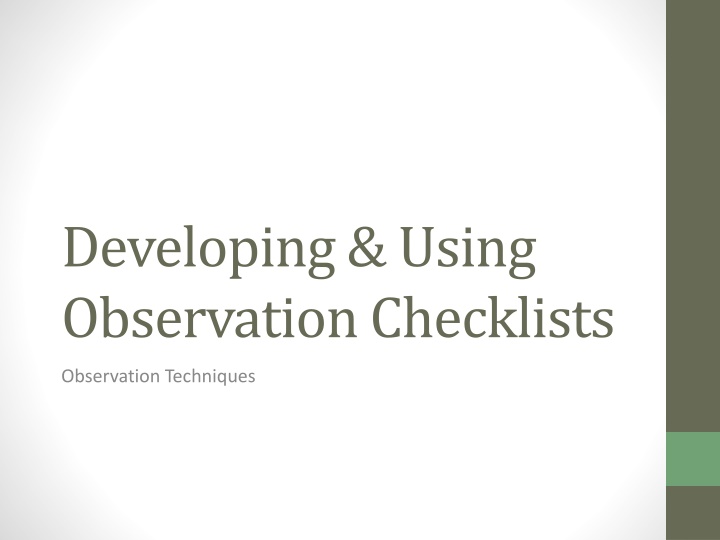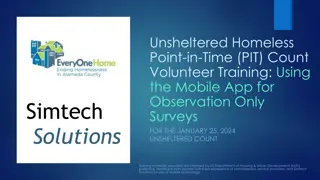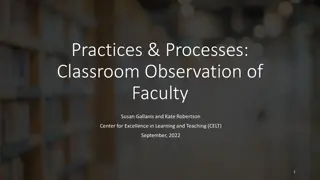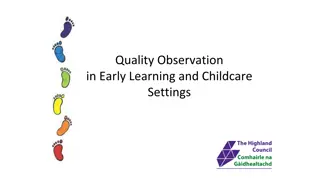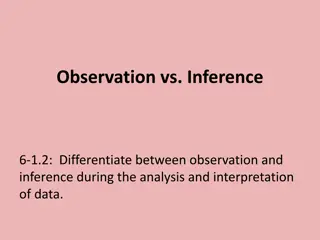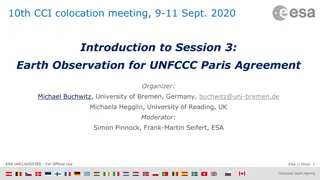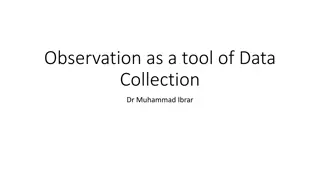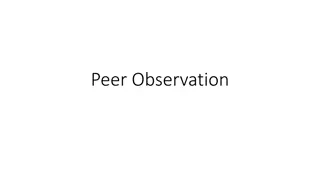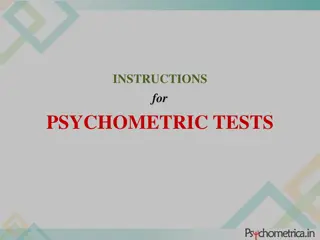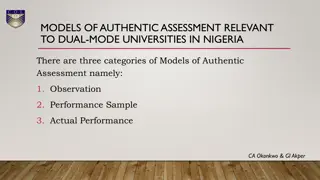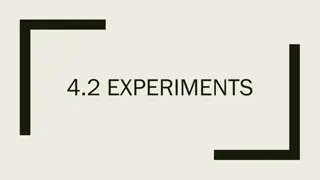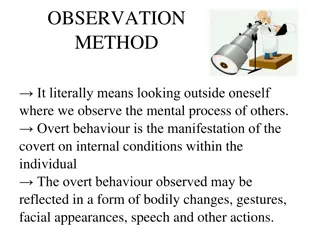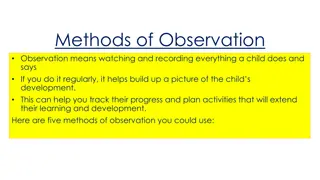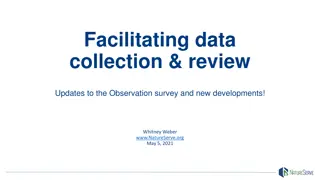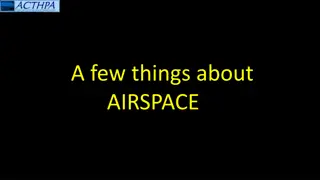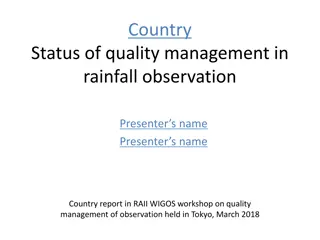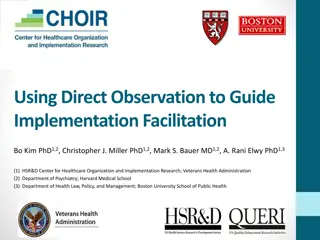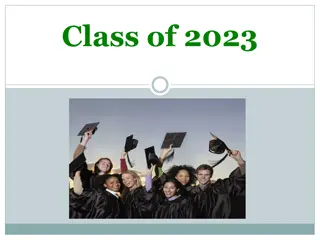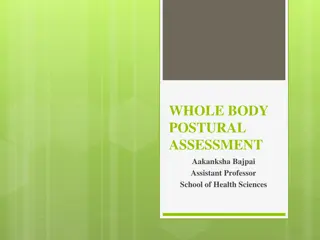Using Observation Checklists for Effective Research
Observation checklists are valuable tools in research, allowing for quick and systematic data collection while maintaining objectivity. They help researchers focus, remain objective, and ensure thorough data coverage. Specificity in checklist design is crucial for capturing nuanced behaviors. The checklist characteristics include mutually exclusive categories, rules for observation, and pilot testing. Practical examples and guidelines are provided for creating effective observation checklists.
Download Presentation

Please find below an Image/Link to download the presentation.
The content on the website is provided AS IS for your information and personal use only. It may not be sold, licensed, or shared on other websites without obtaining consent from the author.If you encounter any issues during the download, it is possible that the publisher has removed the file from their server.
You are allowed to download the files provided on this website for personal or commercial use, subject to the condition that they are used lawfully. All files are the property of their respective owners.
The content on the website is provided AS IS for your information and personal use only. It may not be sold, licensed, or shared on other websites without obtaining consent from the author.
E N D
Presentation Transcript
Developing & Using Observation Checklists Observation Techniques
Why Checklists? Some observational situations lend themselves to noting more routine group behaviors, such as classrooms or meetings Checklists can be helpful for beginning researchers to focus their attention They are less obtrusive and considered expected research behavior Checklists can also help researchers remain objective in making notes of what they see Checklists can be used with ethnographic fieldnotes The researcher could warm up with the use of checklists before moving to more detailed fieldnotes The researcher can also do both side-by-side for triangulation and coverage of data
Characteristics Checklists permit the observational process to occur quickly and systematically with a specified focus Checklists are best when theoretically derived and adapted from pre-existing concepts that tie directly to your research questions Checklists contain the following characteristics: use mutually exclusive categories of behavior or activity develop a set of rules to govern how events are observed and recorded (including specified # of observations and time frame) are pilot tested (meaning that you do a trial run of the checklist before using it formally)
Specificity is Key You need to turn vague, broad statements into specific, observable behaviors, even for qualitative research! Example (too vague): Students are motivated during the class Instead, you need to turn this statement into what motivated looks like: What are students doing that suggests motivation? What are students saying that suggests motivation? How are students interacting with each other and the teachers that suggests motivation? What about student interaction with materials? Does motivated refer to intrinsic, extrinsic, or both? Even if you come up with specific behaviors, are they justifiably tied to motivation (consult the research for support)? This one vague statement will be transformed into several specific statements for your checklist
Checklist Example: Infant Development COGNITIVE Explores objects in many different ways (shaking, banging, throwing, dropping) (8-10 mos.) Finds hidden objects easily (10-12 mos.) Looks at correct picture when image is named Imitates gestures (9-12 mos.) LANGUAGE MILESTONES Responds to simple verbal requests Responds to no Makes simple gestures such as shaking head for no Babbles with inflection (8-10 mos.)
Checklist Example: Meetings Did the leaders: 5. Begin the discussion by asking teachers to share their experiences doing the assigned activities since the last training workshop? 6. Give every teacher the chance to talk about practice assignments, success with implementing behavior plans, parent involvement plans, and assigned chapter readings? 7. Praise efforts teachers made to try out new strategies, implement behavior plans and involve parents? 8. Highlight key principles that their examples illustrate? (e.g., That sounds great! You focused on his positive behavior. You described his calming feelings and patience with the task so clearly. How do you think he responded to that? )
